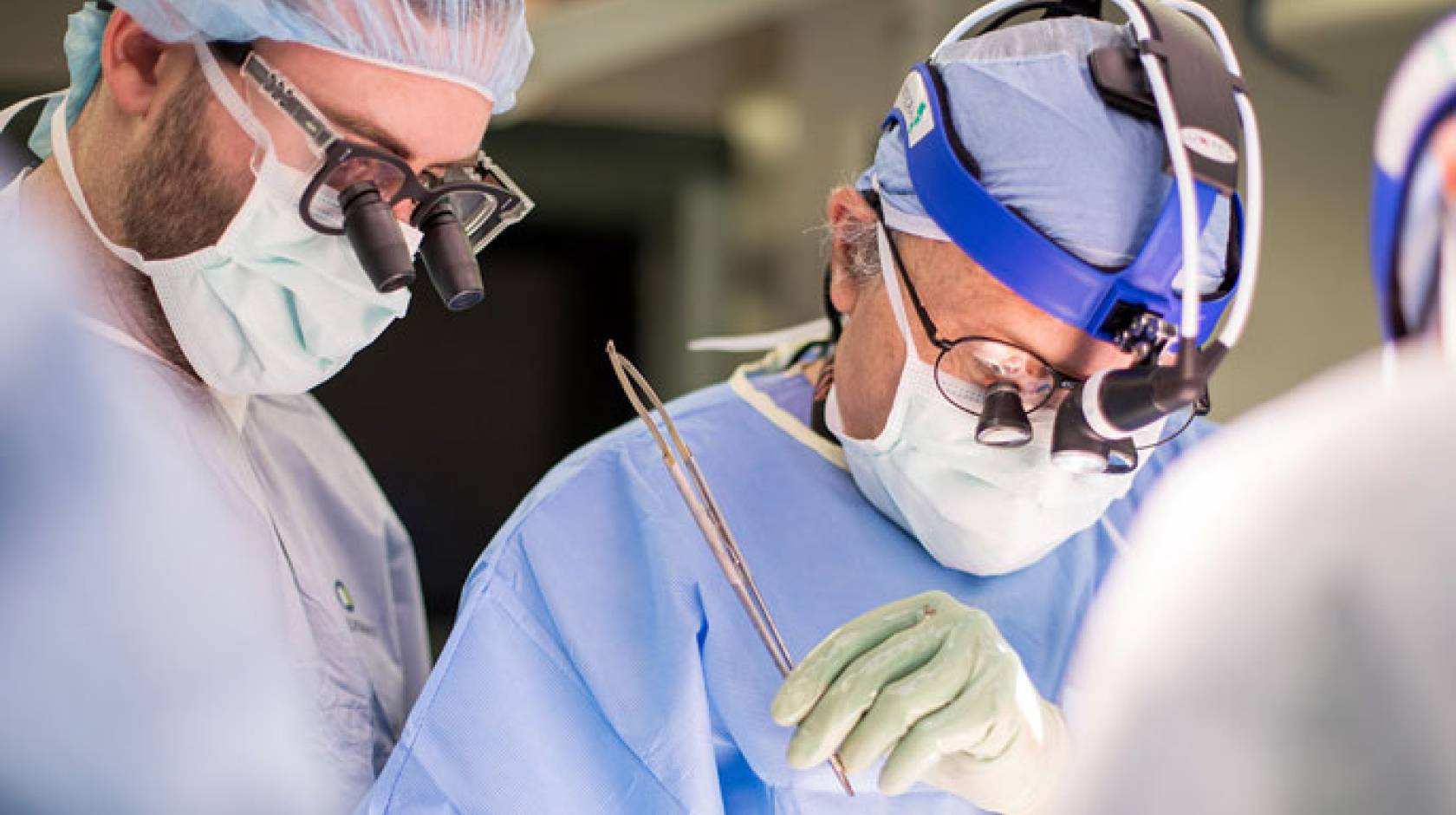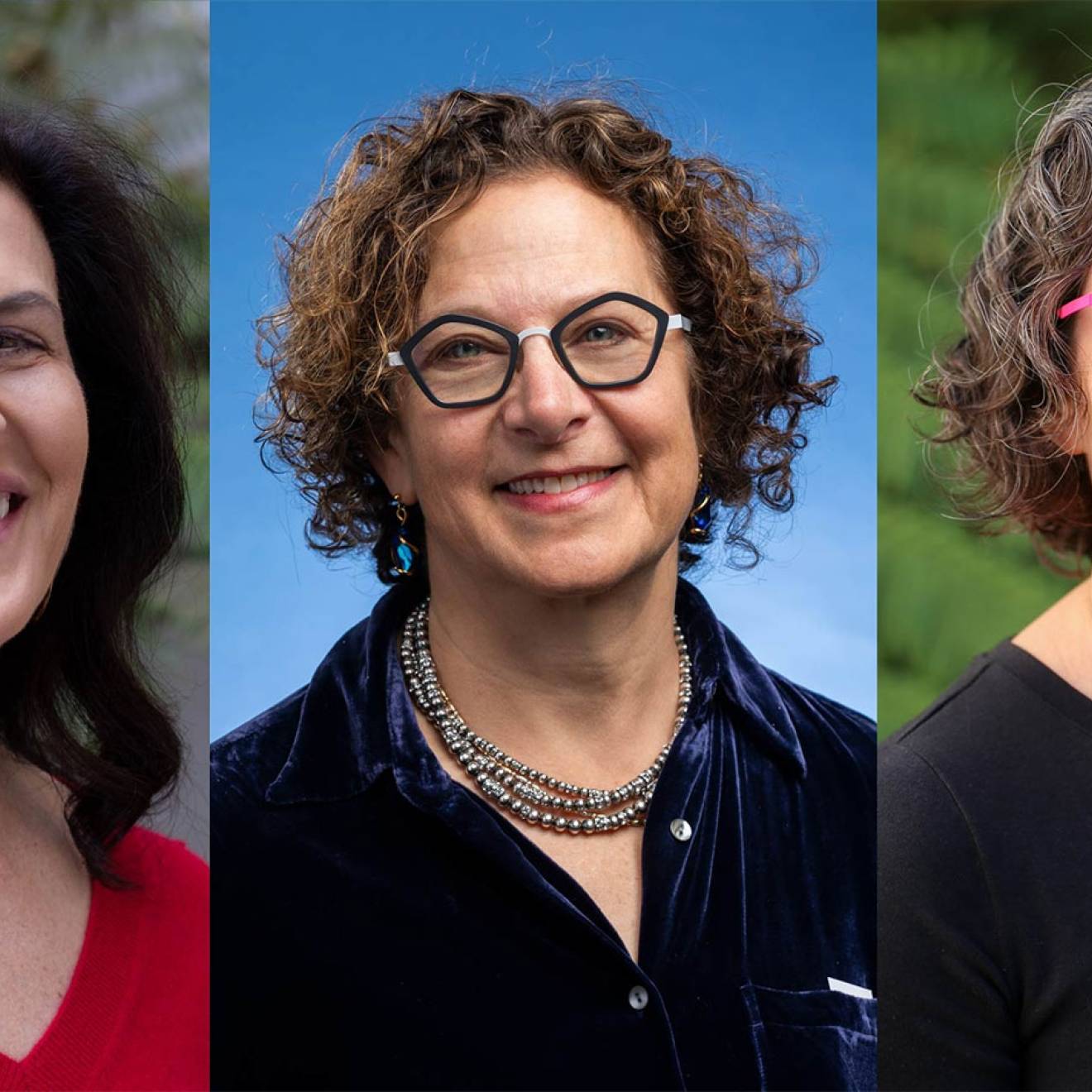Nina Bai, UCSF

Peter Stock, M.D., Ph.D, a transplant surgeon at UC San Francisco, considers himself a representative specimen of his profession. “I think we’re all typically atypical,” he said, by which he means that transplant surgeons thrive on intensity, whether in the operating room or in pursuit of outside interests.
At age 60, he still does about 75 transplants a year, including kidneys, livers and pancreases, runs the Boston Marathon every spring, and skis the American Birkebeiner, a cross-country ski marathon in Wisconsin, every winter. When he can take time off, he climbs mountains around the world.
“I think my interest in endurance events is probably a little bit unique,” he said, on second thought.

Credit: Courtesy of Peter Stock
Stock has always been driven to crack whatever problem is set before him — whether that’s an 8,000-meter mountain peak, a cellular or pancreas transplant to cure diabetes, or outdated laws denying organ transplants to people with HIV.
His tenacity in overcoming hurdles in front of him has led him to ascend some of the tallest mountain peaks in the world and to clear the way for surgeons at UCSF to perform California’s first organ transplants from an HIV-positive donor to HIV-positive recipients.
Just two years ago, such HIV-to-HIV organ transplantations were illegal under federal and state laws written at the height of the AIDS scare in the 1980s. Those bans were repealed thanks in part to groundbreaking research by Stock that showed that transplants in HIV patients could be done safely and effectively.
As a result, Reynaldo Garza, a 59-year-old former florist who had been living with HIV for 20 years and a pair of failing kidneys for seven, recently became one of the first people in California to consent to receiving an HIV infected organ. In November 2016, he gladly accepted a kidney from a deceased donor who tested positive for HIV.
“It was an easy decision for me,” said Garza. He had been very sick for a long time. He was tired of going in for dialysis three times a week, for four hours at a time, sometimes at five in the morning if that was the only slot open. “I already had HIV, I had hepatitis C, I had renal failure. I was like, ‘Yes, I’ll sign anything. Just give me an organ.’”

Credit: Susan Merrell
The availability of HIV-positive organs for patients like Garza could speed the time to transplant by making hundreds more organs available every year. Across the country, a handful of people with HIV have accepted HIV positive organs, and at UCSF alone, there are 50 people on the waiting list. The typical wait time for a healthy kidney in the United States is eight years; for an HIV-infected kidney, it’s one year.
One estimate suggests there may be as many as 500 HIV-positive organs available every year. “But even if it’s 10 a year,” said Stock, “that’s taking 10 patients off the waiting list, and we need to use every organ that’s out there optimally.”
Before Garza could get his kidney, a little-known California law banning the use of infected organs had to be overturned.
Transplants cleared in California
Six months before, in May 2016, the UCSF surgical team was just days away from what they thought would be their first HIV-to-HIV transplant when Stock learned about the law, putting a halt to the procedure.
Hoping to have the law cleared in time for the surgery to move forward, Stock drove to the state capitol in Sacramento to make a personal appeal before state lawmakers to overturn the law. He continued to advocate for the issue, writing a letter to Kamala Harris — then the state attorney general — to expedite the process, as well as working with University of California lawyers.

Credit: Steve German
His work paid off when the state law was repealed just a week later.
Although that initial surgery was canceled, the path was finally clear for HIV-to-HIV transplants in California.
Landmark study challenges ban
Stock’s success in overturning the California ban came just a few years after he played a key role in repealing a federal law that banned the collection of infected organs.
The federal ban, passed in 1988 during the height of the AIDS epidemic, was built on fear of a little understood disease. But before anyone was ready to challenge the ban, the first hurdle was opening up uninfected organ transplants to people with HIV.
Physicians had long discounted the idea that people with HIV could receive organ transplants at all, assuming that their weakened immune systems could not tolerate the immunosuppression required after organ transplants.
In a pivotal study that disproved that long-held belief, Stock and colleagues in 2010 published the results of a multicenter National Institutes of Health (NIH) trial in the New England Journal of Medicine showing good outcomes for kidney transplants in HIV patients. They also saw similar positive results for liver transplants. Here finally was solid evidence that people with HIV could do well with organ transplants.
"Peter, in his study, established the fundamental concept that transplanting someone with HIV was safe and effective."
— Dr. Dorry Segev, Johns Hopkins School of Medicine
Among those who took notice was Dorry Segev, M.D., Ph.D., a transplant surgeon at Johns Hopkins University School of Medicine.
“Peter, in his study, established the fundamental concept that transplanting someone with HIV was safe and effective,” said Segev.
Based on the study results, more and more transplant centers around the country began opening up transplants to HIV patients. And because HIV patients with kidney or liver disease are likely to deteriorate rapidly, the demand was high.
“It was just a matter of time before these transplants were so common that we were creating an organ shortage with people with HIV,” Segev said.
With that thought in mind, Segev turned to the next most natural organ source — potential organ donors who were HIV positive.
The problem became legal rather than medical, with the federal law banning such donations. Segev helped organize an effort to replace the federal ban with the HIV Organ Policy Equity Act, known as the HOPE Act, and recruited Stock to testify at a congressional briefing in June 2012. At the briefing, Stock reiterated the findings of his study and added, “That same study unfortunately also showed that folks with HIV can ill-afford waiting for an organ. They don’t do as well on the waiting list, they get too sick.”
“It’s time to move forward,” he said.
The HOPE Act passed with unanimous bipartisan support in Congress, and was signed into law in November 2013 by President Barack Obama.

Credit: Evan Vucci
It took effect in late 2015 and opened up research into HIV-to-HIV transplants, and in March 2016, Johns Hopkins performed the first HIV-to-HIV liver and kidney transplants in the United States.
Though groundbreaking in the U.S., the Johns Hopkins surgeries came eight years after the world’s first HIV-to-HIV transplant in Cape Town, South Africa — a surgery that Stock helped to bring about.
Request for help from South Africa
Elmi Muller, a young surgeon in South Africa, the country with the most cases of HIV infection in the world, was frequently having to throw away organs from donors who tested positive but were otherwise healthy, and at the same time turning away HIV patients in desperate need of a new kidney.
Around 2006, she had the radical idea to transplant HIV-infected organs into HIV-infected recipients, but didn’t know if it was safe to do medically. Seeking information, she began emailing other surgeons, and Stock was the only one who took the time to reply, Muller said.

Muller had read about Stock’s work in transplanting organs in people with HIV, and she wanted to know how to manage the patients after surgery. They exchanged frequent emails and met when Stock traveled to South Africa for a conference, together working out the details of transplanting HIV-positive kidneys into HIV-positive recipients.
“He was incredibly generous. I would never have been able to start my program if it weren’t for Peter,” said Muller, who now counts Stock as a mentor and close friend. “He gave me so much support.”
In 2008, Muller completed the first HIV-to-HIV transplant, and since then has done 43 kidney transplants with high success. The initial controversy surrounding these transplants nearly got her fired, but the tide has turned in South Africa, and she is now head of the transplant unit at Groote Schuur Hospital.
Muller’s work in South Africa raised the possibility of HIV-to-HIV transplants elsewhere, but at the time, Stock did not think there would be enough support in the United States.
Giving people a chance
Stock’s understanding of the stigma associated with HIV-positive transplants goes back to 1990, when he arrived at UCSF as a surgical fellow. In San Francisco, one of the epicenters of the AIDS crisis, he saw up close how the course of the disease was changing.
In the 1980s, HIV infection had been a death sentence, and no one would have suggested it was a good idea to give an organ to someone who was not likely to survive. Even as the disease became better understood, and antiretrovirals made it a chronic condition, it was still assumed that an HIV-compromised immune system could not tolerate the immunosuppression required after organ transplants.
In the 1990s, people with HIV were living long enough to succumb to liver and kidney disease. The transplant community at large was slow to recognize the change in HIV survival, said Stock, but in San Francisco, it was hard to miss. “In the late 1990s, we started to see a lot of people with HIV come to us who looked more or less like any other transplant candidate,” he said.

Credit: Susan Merrell
He and the transplant team at UCSF decided they no longer could turn them away.
“We just started to do transplants in these patients, because they looked so well and their CD4 counts were acceptable on the antiretroviral therapy,” Stock said. “And lo and behold, they did very well.”
When UCSF became the first medical center on the West Coast to do transplants in people with HIV, it was not long past the era when people donned protective “space suits” around HIV patients for fear of contracting the virus.
“Every last one of them was willing to do these transplants, as was our operating room,” Stock said of his colleagues, all of whom risked accidental needle sticks that are not uncommon during transplant surgeries. “We made it optional for all the nurses, the technicians, the residents, and I have to tell you, nobody said no, not a single person.”
Road to transplant surgery
Stock’s path to UCSF’s operating rooms began in snowy Colorado.
He grew up on the South Side of Chicago, the son of German immigrants, and was always a good student, but, by his own account, somewhat of a trouble maker. He thought he might like to become a pilot, but decided he’d get kicked out of the Air Force in no time.
Instead, over Christmases spent in Colorado, where his aunt lived, Stock fell in love with the mountains — skiing and climbing every chance he got.

Credit: Courtesy of Peter Stark
That love led to mountaineering, an extreme endurance sport that can involve hiking, skiing, rock and ice climbing, sometimes on grueling month-long expeditions up and over some of the tallest peaks in the world.
“The thing that has always motivated me is what’s in front of me,” said Stock, who often looks like he could use an extra hour of sleep but has the coiled energy of someone ever ready to spring into action. He relishes a good challenge, especially if success hangs on teamwork, whether that’s on the sheer face of a mountain or in the operating room.
Over the years, Stock has attempted many of the more challenging peaks on Earth, including the Swiss Alps, the South American Andes, the Pamirs in Tajikistan, and Broad Peak in Pakistan.
The same childhood winters in Colorado that turned him on to mountaineering also introduced him to transplant surgery. His aunt happened to be the social worker for Tom Starzl, widely known as the father of modern transplant surgery. “She would always take us on rounds with her to meet all the patients, all the kids that he would be transplanting,” remembered Stock. “And that I’m sure had a major imprint on my life.”
When it came time for college, Stock wanted to attend the University of Colorado, but fearing he would become a ski bum, his father steered him toward the University of Illinois, in the middle of a cornfield.
Stock thrived in the biology program at Illinois, and he stayed for medical school. As a medical student, a rotation in the trauma unit at Cook County Hospital — a Level 1 trauma center that serves Chicago — cemented his decision to become a surgeon. The ability to change a life in an instant hooked him. When he moved on to residency at the University of Minnesota, where there were fewer trauma cases, the place where he saw that instant transformation was in transplant.
“We all — all of the transplant surgeons — are addicted to doing it because it transforms people’s lives like that,” he said with a snap of his fingers.

Credit: Susan Merrell
At Minnesota, Stock, who had long been fascinated by the immune system and its role in transplantation, worked toward a doctorate in transplant immunology, researching pancreatic islets and how transplanting these cells may be used to cure diabetes. Pancreatic transplants remain his main area of specialty.
Meanwhile, his work in HIV-positive organ transplants has spawned surprising new lines of research into the immune system. An immunosuppressant drug used in kidney transplants, called sirolimus, appears to lower HIV reservoirs in the blood; and an antiretroviral drug developed for HIV, called maraviroc, seems to reduce rejection of organ transplants. Both are now in trials funded by the NIH. “Total serendipity, totally unexpected findings, but potentially huge impact,” said Stock.
When he talks to medical students these days, he doesn’t hesitate to call transplant surgery the best field. “It combines the best open surgery there still is with the most interesting medicine, science, immunology, ethics — who gets transplants,” he said. “It’s just this whole constellation of things that make the field of transplantation so interesting.”

